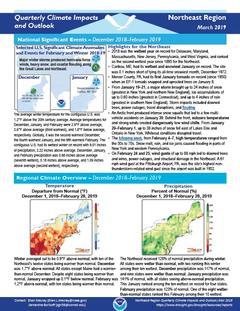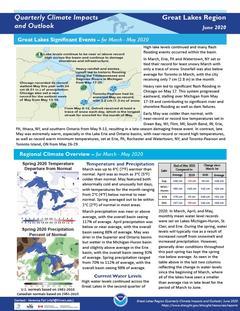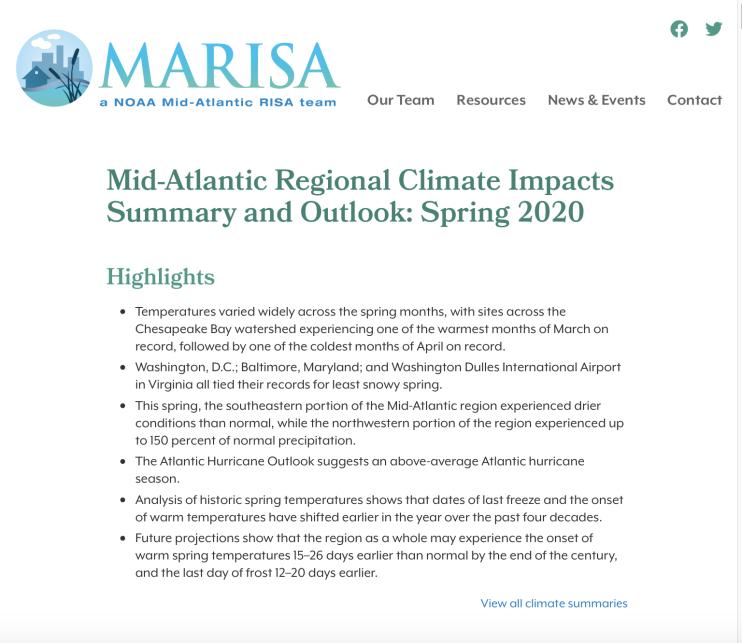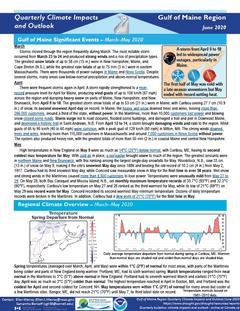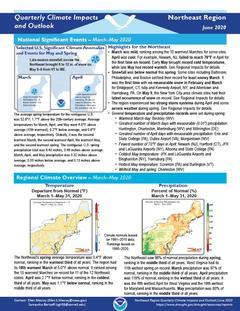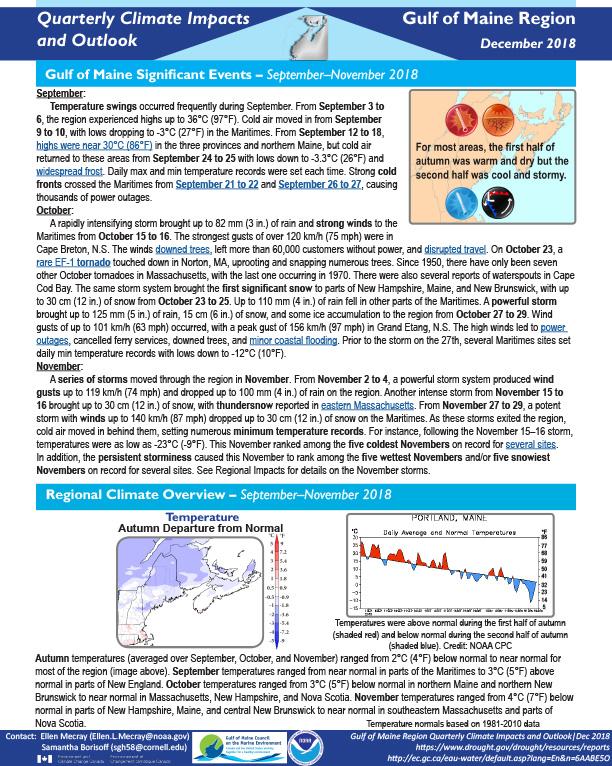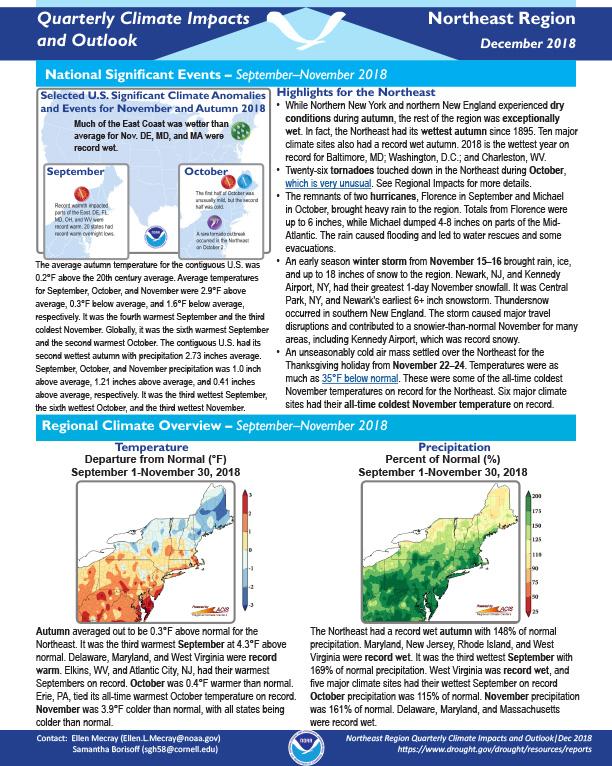Quarterly Climate Impacts and Outlook for the Gulf of Maine Region for December 2018 – February 2019. Dated March 2019.
Winter temperatures (averaged over December, January, and February) ranged from 2°C (4°F) below normal to 2°C (4°F) above normal. Winter precipitation (accumulated from December–February) generally ranged from 75% to 150% of normal.
Quarterly Climate Impacts and Outlook for the Northeast Region for December 2018 – February 2019. Dated March 2019.
Winter averaged out to be 0.9°F above normal, with ten of the Northeast's twelve states being warmer than normal. The Northeast received 128% of normal precipitation during winter. All states were wetter than normal, with two ranking this winter among their ten wettest.
Quarterly Climate Impacts and Outlook for the Great Lakes Region for March – May 2020. Dated June 2020.
Spring temperatures averaged out to be within 1°C (2°F) of normal in most areas. Spring precipitation ranged from 70% to 112% of average, with the overall basin seeing 98% of average.
Quarterly Climate Impacts and Outlook for the Chesapeake Bay Region for March – May 2020. Dated June 2020.
Temperatures varied widely across the spring months, with sites across the Chesapeake Bay watershed experiencing one of the warmest months of March on record, followed by one of the coldest months of April on record. The southeastern portion of the Mid-Atlantic region experienced drier conditions than normal, while the northwestern portion of the region experienced up to 150 percent of normal precipitation.
Quarterly Climate Impacts and Outlook for the Gulf of Maine Region for March – May 2020. Dated June 2020.
Spring temperatures (averaged over March, April, and May) were within 1°C (2°F) of normal for most areas, with parts of the Maritimes being colder and parts of New England being warmer. Spring precipitation (accumulated from March to May) ranged from 50% of normal to 110% of normal for much of the region.
Quarterly Climate Impacts and Outlook for the Northeast Region for March – May 2020. Dated June 2020.
The Northeast's spring average temperature was 0.4°F above normal, ranking in the warmest third of all years. The Northeast saw 98% of normal precipitation during spring, ranking in the middle third of all years.
Quarterly Climate Impacts and Outlook for the Gulf of Maine Region for September – November 2018. Dated December 2018.
Autumn temperatures ranged from 2°C (4°F) below normal to near normal for most of the region. Autumn precipitation generally ranged from 75% of normal in northern New Brunswick to 200% of normal in southeastern Massachusetts.
Quarterly Climate Impacts and Outlook for the Northeast Region for September – November 2018. Dated December 2018.
Autumn averaged out to be 0.3°F above normal for the Northeast. The Northeast had a record wet autumn with 148% of normal precipitation.
Provides a definition of El Nino; the outlook for winter temperatures and precipitation; potential winter impacts; and a look back at previous El Nino winters.
NOAA’s Regional Climate Services Program created these Outlooks to inform the public about climate impacts within their respective regions. Each regional report contains easy-to-understand language, and anyone can access them through the Drought Portal at https://www.drought.gov/drought/resources/reports.
Quarterly Climate Impacts and Outlook for the Gulf of Maine Region for June – August 2018. Dated September 2018.
Summer temperatures were near normal to 2°C (4°F) above normal. Caribou, ME, had its warmest summer on record. Summer precipitation ranged from 50% to 150% of normal.



